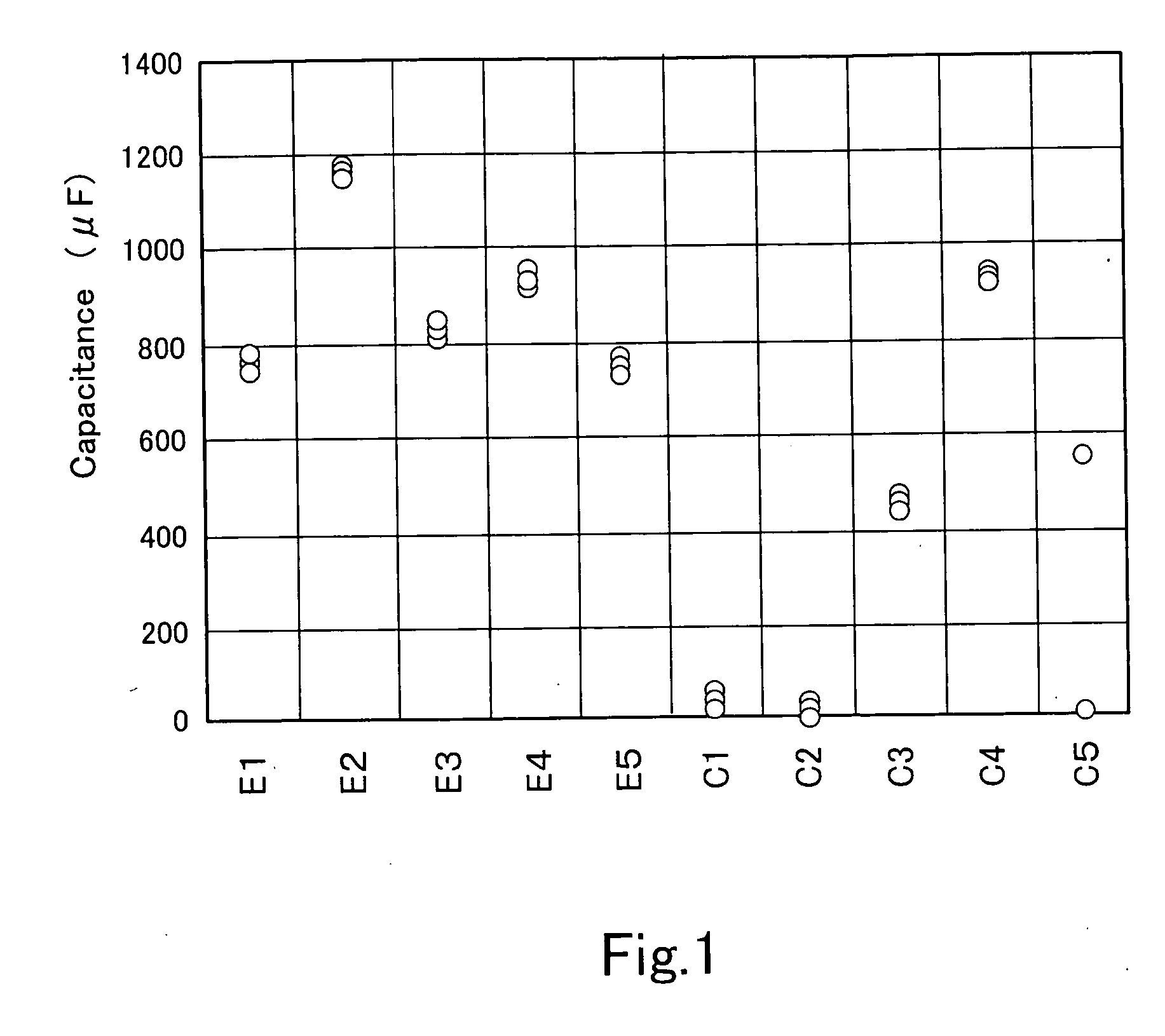Niobium alloy powder, anode for solid electrolytic capacitor and solid electrolytic capacitor
a solid electrolytic capacitor and alloy powder technology, applied in the direction of liquid electrolytic capacitors, wound capacitors, fixed capacitors, etc., can solve the problems of degrading the performance of the capacitor, increasing the leakage current, etc., to achieve long-term stability, reduce the leakage current of the capacitor, and improve the heat resistance preferably
- Summary
- Abstract
- Description
- Claims
- Application Information
AI Technical Summary
Benefits of technology
Problems solved by technology
Method used
Image
Examples
examples
[0022] Specific examples of the present invention will be described below with reference to Examples.
[0023] Niobium pentachloride was used as a raw material for niobium, and a niobium alloy powder was prepared by hydrogen reduction. In so doing, chlorides of molybdenum, tungsten and the like were added to the raw material for niobium to regulate the components. Moreover, a heat treatment was carried out in an atmosphere of argon gas at 800 to 1000° C. to control the particle size and the pore volume of the powder. By use of this niobium powder, a pellet was formed and a solid electrolytic capacitor was fabricated on the basis of the following method.
[0024] A niobium wire of φ0.3 mm to be used as a cathode was embedded in a mass of 0.1 g of the niobium alloy powder and the mass was press molded to a bulk density of 3000 kg / m3 to form a pellet. The so formed pellet was sintered in an atmosphere having an internal pressure of the furnace of 1×10−3 Pa, at 1100 to 1400° C. The sintered...
PUM
| Property | Measurement | Unit |
|---|---|---|
| specific surface area | aaaaa | aaaaa |
| diameter | aaaaa | aaaaa |
| diameter | aaaaa | aaaaa |
Abstract
Description
Claims
Application Information
 Login to View More
Login to View More - R&D
- Intellectual Property
- Life Sciences
- Materials
- Tech Scout
- Unparalleled Data Quality
- Higher Quality Content
- 60% Fewer Hallucinations
Browse by: Latest US Patents, China's latest patents, Technical Efficacy Thesaurus, Application Domain, Technology Topic, Popular Technical Reports.
© 2025 PatSnap. All rights reserved.Legal|Privacy policy|Modern Slavery Act Transparency Statement|Sitemap|About US| Contact US: help@patsnap.com



